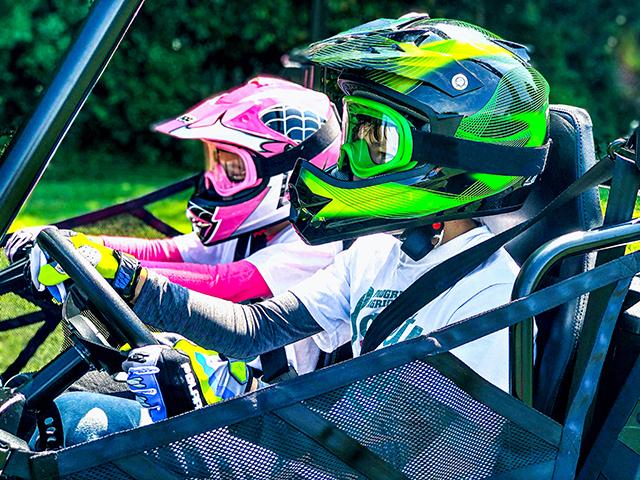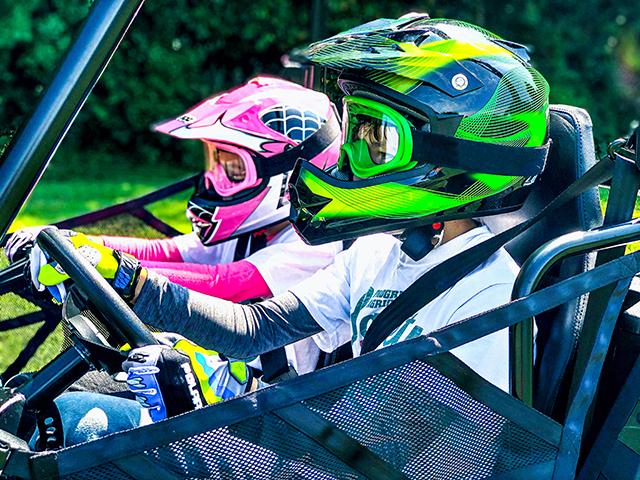MachineryLink
Head Injuries Reduced by Wearing Helmets When Operating Vehicles, Riding Horses
OMAHA (DTN) -- Increased helmet use by rural youth can help decrease the number of deaths and serious injuries associated with vehicles such as all-terrain vehicles (ATVs) and utility-terrain vehicles (UTVs). These accidents are the most frequent causes of death and serious injuries for rural youth.
Wearing a helmet protects youths operating other vehicles, riding horses, as well as operating snowmobiles -- all have a risk of possible head injuries.
RURAL YOUTH AND ATVS/UTVS
In a recent webinar titled "Brain Health: Helmets and Rural Youth", Charles Jennissen, a professor in the Department of Pediatrics and Emergency Medicine at the University of Iowa Carver College of Medicine, discussed the importance of wearing helmets when operating various vehicles on the farm (https://www.youtube.com/…). Mishaps with these vehicles are one of the most frequent causes of death and serious injury related to farmwork.
A study from the National Farm Medicine Center conducted in 2015 and 2016 showed ATVs/UTVs were the second most common source of injury/death in agriculture across all ages. Accidents with these machines were the leading cause of injury/death in agriculture youth up to 17 years old, he said.
Head injuries are the most frequent cause of death and permanent disability with ATV crashes, Jennissen added.
Wearing a helmet can reduce the risk of head injuries by about 80%.
"Despite the benefits, helmets are not frequently worn on the farm," Jennissen said.
A survey of 1,573 attendees of the 2017-18 Iowa FFA Leadership Conference revealed extremely low numbers of rural youth wear helmets when operating ATVs.
P[L1] D[0x0] M[300x250] OOP[F] ADUNIT[] T[]
The survey found 64% of the youth never or almost never wore helmets when operating ATVs. Only 18% always or almost always wore a helmet when operating these machines.
Jennissen said there are many reasons why ATV operators do not wear helmets. The reasons include reduced vision, affecting concentration, interference with hearing and too hot.
Helmets do come in various designs, including some similar to bicycle helmets that only cover the top of the head. However, the majority of the skull has to be covered for a helmet to protect an operator of an ATV, he stressed.
Jennissen said the culture surrounding wearing helmets must change with rural youth. Increased helmet use would likely decrease the number of deaths and serious injuries associated with these vehicles, he said.
HELMETS AROUND HORSES
Horses are often overlooked in terms of helmet use on farms by rural youth. Roughly 2.85 million horses are present on working U.S. farms and ranches according to the USDA National Agricultural Statistics Service.
Jennissen said despite often being viewed as having little risk or danger, equestrianism leads to more hospital admissions than motorcycle riding. Head injuries are associated with most horse-related deaths and hospitalizations.
Wearing a helmet significantly reduces the frequency of hospitalization, the severity of injury and the likelihood of traumatic brain injury, he noted. Approved helmets have reduced severe head injuries by 50%.
"Yet helmets are used by less than 25% of children and less than 9% of adults when riding horses," he said.
Jennissen said those working with horses should wear helmets when riding horses, as well as when grooming and taking care of horses. One study found 42% of horse-related injuries occur when the rider is on the ground.
Parents should be good role models for children and use helmets when operating vehicles and working with horses, he said.
SNOWMOBILES AND HELMETS
Jennissen said while good portions of the Midwest don't see much snow in the winter, it's also important to wear a helmet when operating snowmobiles.
One study found 19% of snowmobile accidents were youth 18 years old or younger. Most youth injuries with snowmobiles involved hitting objects and being thrown off the machines.
Wearing a helmet while operating a snowmobile reduced by 63% the odds of requiring in-patient admission compared to those not wearing helmets, he said.
Wearing a helmet while riding a snowmobile is considerably higher compared to use in the operation of ATVs. One survey showed 59% of youth snowmobile operators wore helmets. This compares with only 18% helmet use when they operate ATVs.
"The safety culture around snowmobiles is much different than with other vehicles," Jennissen. Helmet use also may be more acceptable when operating snowmobiles because of the cold weather, he said.
Russ Quinn can be reached at Russ.Quinn@dtn.com
Follow him on X, formerly Twitter, @RussQuinnDTN
(c) Copyright 2023 DTN, LLC. All rights reserved.





Comments
To comment, please Log In or Join our Community .